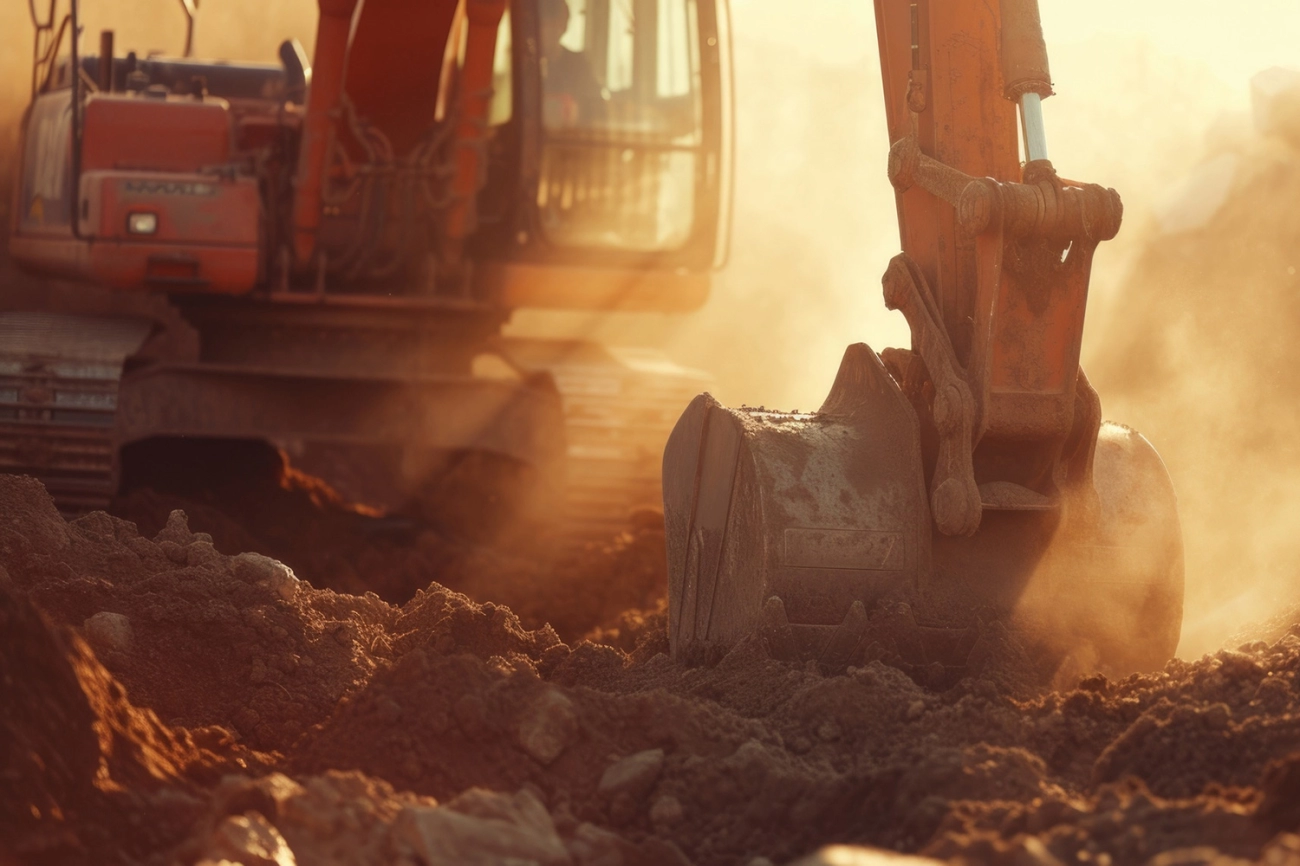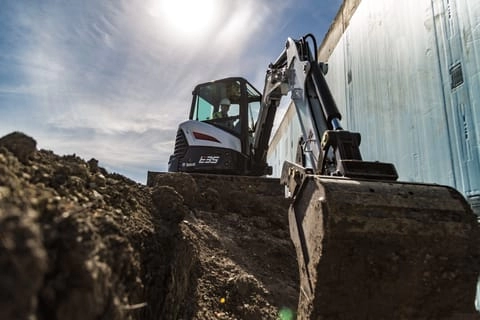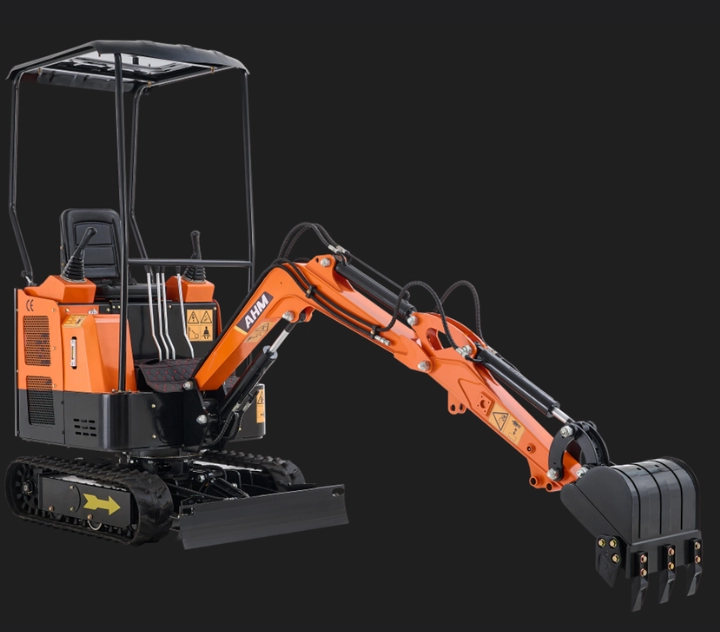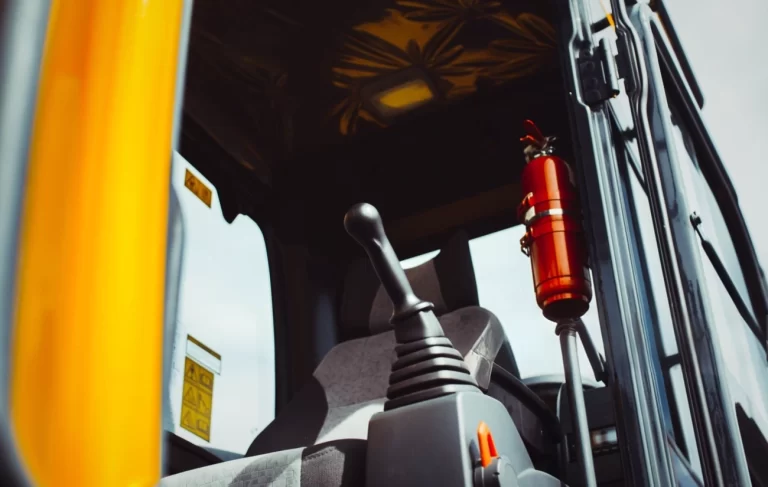-
Shandong Province, China
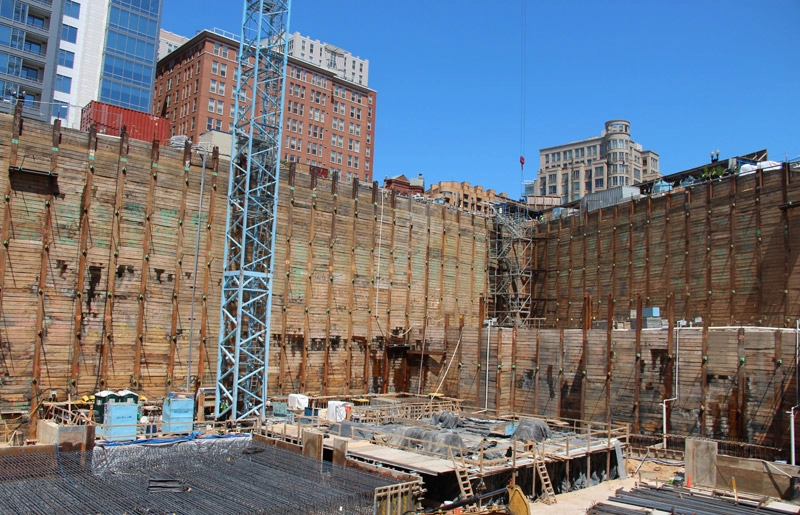
What is excavation support? Analysis of construction safety and common support types
What is excavation support
Excavation support (shoring) refers to the use of structural braces or materials in excavation projects tosupport the soil wallto prevent soil collapse and damage to surrounding structures. Its main purpose is to ensure the safety of excavation operations and prevent collapses caused by unstable soil.
The key technical principle of support
During the excavation process, the soil on both sides of the excavated trench or pit is prone to losing balance due to gravity or external forces, leading to shaking or collapse. The support system disperses static or dynamic soil pressure onto a sturdy structure through physical connections, effectively preventingsoil wall deformation or collapse, protecting on-site workers and equipment.
How to prevent collapse and accidents
- Securing the soil wall structure: Supports or columns 'fix' the surrounding soil to prevent loosening.
- Dispersed pressure: Distributes the natural downward force of the soil to the support, reducing soil movement.
- Reduce vibration impact: In areas near traffic or construction equipment, supports can absorb or slow down vibrations that cause structural damage.
Excavation support is not just an engineering aid, but also a safety measure for excavation.The first line of defenseProper support can prevent serious construction delays, financial losses, and even fatal accidents, making it an indispensable safety measure in every excavation project.
Why support is so important in excavation projects
In excavation projects, in Taiwan,shoring is not only a basic safety measure but also a key to ensuring smooth and legal construction. The following three aspects illustrate the importance of support:
Ensuring the safety of workers and equipment
During excavation, soil may collapse due to groundwater, soil loosening, or external forces, posing serious threats to workers and construction equipment.A good support system can effectively prevent wall collapse and reduce accident risks.Ensuring the safety of on-site personnel and the integrity of machinery, avoiding unbearable economic losses.
Complies with local building regulations and engineering standards.
All counties and cities have clear regulations on construction safety and soil support, especially in urban areas or underground public facilities construction, which are more stringent.Proper use of support systems can ensure the project complies with the Building Code and local government safety standards.To avoid violations leading to penalties or work stoppages, ensuring the legal operation of the enterprise.
Reduce project delays and construction costs
Cave-in walls not only threaten safety but also causeWork area sedimentation backfill, equipment maintenance, and even secondary excavationSignificantly delay progress and increase labor and material costs. Using appropriate support methods can stabilize soil conditions and improve construction efficiency.Avoid rework, saving time and expenses。
In the confined construction sites, especially suitable for flexible construction with small excavators (such as HY Excavator models 0.8 to 2.0 tons), combining effective support techniques to enhance safety and efficiency. For contractors aiming to reduce safety risks and control costs, this is an indispensable investment.
Common types of excavation support and excavation support techniques
InExcavation support (shoring)Choosing the right support system is crucial because it directly affects site safety and project efficiency. The following are some common and practicalexcavation support systemsthat are also frequently used in construction sites.Excavation support technology。
Hydraulic Shoring
Hydraulic shoring uses hydraulic cylinders to generate strong thrusts, supporting the soil wall and preventing collapse. This system is quick to install and adjustable, especially suitable for sites with limited depth and space. Hydraulic systems can greatly improveExcavation safety measuresand shorten construction time.
Wood shoring
Traditional timber supports are still widely used, especially in small or shallow excavation operations. Timber is inexpensive and readily available, but installation and removal are time-consuming, and it is not suitable for long-term or heavy-duty operations. To ensure safety, regular inspection of timber condition is necessary.
Pneumatic Shoring
Air pressure support also uses compressed air to open the support frame, suitable for quick support of medium to shallow excavations. This method is easy to install, lightweight, and especially suitable for urban excavation projects with limited space, making it a good choice for small to medium-sized projects.
Aluminum Hydraulic Shores
Aluminum hydraulic shores combine the lightweight of aluminum with the powerful hydraulic thrust, suitable for sites requiring frequent movement or confined spaces. This system is becoming increasingly popular in the United States because it shortens construction time, reduces labor burden, and improves overall construction efficiency.
Steel Sheet Piling
Steel sheet piles are commonly used in large-scale excavation projects, forming a continuous wall by inserting steel sheets into the soil to stabilize the soil and isolate groundwater. Although more expensive, they are very durable and suitable for long-term operations and deeper excavations.
Comparison table of excavation support types
| Support type | Scope of application | Advantages | Disadvantages |
|---|---|---|---|
| Hydraulic support | Medium to deep depth | Quick installation and easy adjustment | Higher equipment costs |
| Wood support | Shallow, small-scale operations | Low cost, easy to obtain | Not durable, requires frequent inspection |
| Pneumatic support | Shallow, medium-duty operation | Lightweight and quick, suitable for narrow spaces | Support strength weaker than hydraulic systems |
| Aluminum alloy hydraulic support | Small to medium-sized, versatile on-site | Lightweight and efficient, saves labor and time | Higher initial equipment investment |
| Steel sheet pile | Large-scale, deep excavation | Sturdy and durable, suitable for long-term operations | High cost, requires large machinery for operation |
According to the on-site soil properties, excavation depth, space limitations, and safety requirements, choosing the appropriateexcavation support systemsIt is very important. For most small to medium-sized construction sites, we recommend usingHYExcavator small excavatorhydraulic or pneumatic supports, which ensure both efficiency and safety, complying with strictexcavation safety standards。
support installation and use during tunneling operations
Basic process and key points of support installation
In excavation projects,support system (shoring) is crucial to prevent soil collapse. The installation process typically includes:
- Site assessment: determining soil quality, depth, and surrounding environmental conditions.
- Design and Selection: Choose the appropriate support type based on on-site conditions (such as hydraulic supports, wooden supports, aluminum supports, etc.).
- Placement of Support Structure: Install the support frame upright in the trench or excavation edge according to the design dimensions.
- Fixation and Pressurization: Use hydraulic or pneumatic systems to ensure the support frame is secure, enhancing soil stability.
The correct installation process not only prevents slope collapse but also enhances overall operational safety, avoiding accidents.
The role of small excavators in support installation
For most urban areas or confined construction sites,small excavatorsit is a good helper to improve support installation efficiency. Its advantages are:
- Flexible operation: suitable for narrow spaces, able to quickly position support materials.
- Precise placement: capable of accurately placing large or heavy materials, shortening construction time.
- High compatibility: Compatible with hydraulic or pneumatic support systems, quickly adjusting fixed positions.
For example, the HYExcavator series of mini excavators, weighing 0.8 to 2.0 tons, designed specifically for construction sites, becoming an indispensable tool in support operations.
Common support application scenarios
Most excavation projects use supports based on different needs, especially in the following situations:
- Excavation of trenches exceeding safety standardsAvoid the danger of wall collapse.
- Loose or water-rich soil.Increase the stability of excavation sites.
- Construction sites near buildings or pipelines.Prevent ground displacement from damaging surrounding facilities.
- Heavy equipment frequently entering and leaving the site.Ensure operational environment safety.
In the above scenario, using appropriate support systems and small excavators not only effectively safeguards workers but also accelerates project progress and reduces costs.
In summary, the installation of excavation supports must be combined with soil conditions, project requirements, and mechanical assistance to achieve optimal safety and efficiency.
Safety precautions and best practices for excavation support
In excavation projects,Support structure (shoring) safetyis key to preventing collapses and accidents. Proper safety management not only protects workers and equipment but also compliesConstruction safety regulationsto avoid project delays and economic losses.
Assessment of excavation support front site
- Comprehensive evaluation of soil and terrain conditions: Understanding soil type, water content, and underground structures is the basis for selecting the appropriate support system. When soil is unstable, support strength must be reinforced.
- Inspect on-site space and equipment entry and exitEnsure that the mini excavator and support equipment can move in and out smoothly to minimize operational interference.
- Predict potential risk areassuch as near buildings, pipelines, or roads, and design appropriate support plans to enhance protection.
Regular inspections during excavation
- Daily safety patrols of support conditionsto ensure the supports remain stable, with no signs of looseness or damage.
- Monitor soil changes, especially during rain or earthquakes, requiring immediate reinforcement or adjustment of support systems.
- Check support and excavation synchronization processes, to prevent excavation from proceeding too quickly or exceeding planned depths, which could cause support failure.
Properly dismantle supports after excavation is complete
- Dismantling should be orderly and slowAvoid sudden soil loosening or collapse.
- Gradually unload pressure according to construction standards.Ensure site safety before fully removing support equipment.
- Clear the site and maintain machinery.Prepare for subsequent construction.
Support-related training and certification
- All personnel must undergo professional support operation training, familiar with the characteristics and safety procedures of various support systems.
- Obtain relevant safety certificationssuch as excavation safety management and support structure certifications, which are important regulatory requirements and corporate risk management basis.
- Continue to conduct educational trainingto keep up with the latest excavation support technology and construction standards.
In summary, implementexcavation support safety measuresStrict adherence to best practices is a fundamental condition for maintaining construction site safety and improving construction efficiency.
Choose the appropriate excavation support system
Choosing the right excavation support systemChoosing the correctexcavation support system (shoring system)is key to ensuring project safety and efficiency. Deciding which support method to use requires considering multiple factors, especially soil type, excavation depth, and site space limitations.。
Main factors affecting support system selection
-
Soil types
Sand, clay, or rock layers have different support requirements; some soils are loose and prone to collapse, requiring stronger support to stabilize the ground.
-
Excavation depth
The deeper the excavation, the greater the pressure on the support structure, and the more advanced support methods are needed.
-
Construction site space limitations
Construction in urban or confined areas with limited space, where traditional wooden supports may not be convenient, is better suited with lightweight and easy-to-operate hydraulic or pneumatic supports.
Advantages of hydraulic and pneumatic supports
Hydraulic and pneumatic supports are especially suitable forsmall to medium-sized excavation projectsbecause they:
- are quick to install and save labor time
- Flexible operation, suitable for confined spaces
- Strong support, enhances construction safety
- Lightweight and easy to carry, convenient for position adjustment
Compared to traditionaltimber shoringthese two modern support methods better meet urban construction and time efficiency requirements.
HYExcavator and Support System Integration
As a local in TaiwanSmall Excavator Manufacturer and Supplier, HYExcavator's various small excavators ranging from 0.8 tons to 2.0 tons are very suitable for use with hydraulic and pneumatic support systems. Its features include:
- The body is compact and agile, easy to operate support equipment in tight spaces
- High load capacityable to transport and assist in installing various support components
- easy to operate and labor-savingreducing manpower and increasing safety
Therefore, choosing the HYExcavator model not only meets the on-site restrictions of construction sites but also pairs with advanced support technology to effectively improve excavation safety and efficiency.
Summary:
- Select the appropriate support system based on soil type, depth, and space
- Hydraulic and pneumatic supports are suitable for small to medium urban excavations
- HYExcavator mini excavator can perfectly match modern support systems
- Enhance construction site safety, shorten construction time, reduce costs
These combinations can significantly improve construction sites in the United StatesMining support efficiency and safety, ensuring smooth and worry-free construction.
HYExcavator solutions make excavation and support more efficient
HYExcavator Small Excavator Introduction
HYExcavator Focused on Production 0.8 ton to 2.0 ton small excavatorssuitable for variousexcavation support needs (excavation support methods). These models demonstrate flexible and stable operation performance in urban construction, narrow spaces, and small foundation projects, especially when combined with different types ofSupport system (support structure system)When used, it can effectively improve construction safety and efficiency.
Advantages of using HYExcavator machinery for excavation support
- Precise operation shortens construction timeSmall excavator size allows easy access to narrow areas, combined with Hydraulic support (hydraulic support in construction) Hydraulic support system, quick installation and removal, avoiding construction delays.
- Improve on-site safety: HYExcavator machine is flexible, capable of completing excavation while protecting the support structure, reducing the risk of soil wall collapse, compliant with localConstruction safety regulations (excavation safety measures)。
- Reduce overall costs: Easy to operate and maintain, with suitable support technology, effectively controlling project expenses, reducing rework and compensation caused by support failure.
HYExcavator Customization and Support Solutions
- Tailored to construction needs: Offering a variety of machine models, with support system recommendations suitable for different soil types, depths, and space constraints, ensuring each excavation project has the most appropriate equipment support.
- Comprehensive customer service: From machinery selection to maintenance and repairs, HYExcavator provides real-time technical support to help construction teams resolve on-site issues and ensure smooth excavation and support operations.
- Educational training resourcesFor on-site operators, HYExcavator also provides Support system safety training (excavation support safety measures)to strengthen construction safety culture and reduce accident rates.
Combining HYExcavator's small excavators with professional excavation support technology is the best choice for small and medium-sized projects to improve efficiency and ensure safety. Using our equipment and solutions, you don't have to worry about project delays or safety concerns, making your excavation work smoother and the construction site safer.


